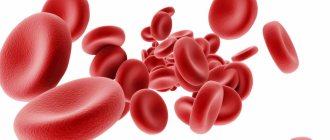Almost every woman has had to deal with white vaginal discharge. Most often, white discharge is considered normal and does not cause concern in women. Why do they appear? Should I worry? Gynecologists warn that sometimes even seemingly harmless leucorrhoea can be an indicator of a serious pathological process.
COST OF SOME GYNECOLOGIST SERVICES IN OUR CLINIC IN ST. PETERSBURG
| Price for a gynecologist's appointment | 1000 rub. |
| Extended colposcopy | 1300 rub. |
| Ultrasound of the pelvis (all organs) | 1300 rub. |
| Call free: 8-800-707-1560 *The clinic is licensed to provide these services | |
What is leucorrhoea?
The content of the article
Leucorrhoea is a vaginal discharge similar in consistency to egg white, which a woman usually notices on her underwear. Regular mucous discharge, which changes its consistency during the menstrual cycle, is not in itself considered a dangerous symptom. It is bad if the leucorrhoea is yellow, gray or red in color, has an unpleasant odor, or is released in large quantities. These are symptoms that indicate serious changes in the body that cannot be ignored.
How does natural vaginal discharge change?
The consistency, viscosity and density of normal white discharge varies depending on the phase of the menstrual cycle. The female hormones estrogen and progesterone are responsible for these changes.
- Early in the cycle (before ovulation), when estrogen levels rise, the discharge is whitish, scanty, clear and viscous.
- During ovulation, the job of mucus is to facilitate fertilization and protect sperm. The mucus then becomes the most abundant, sticky, transparent, and less viscous. It resembles the white of a chicken egg.
- After ovulation, the mucus thickens, becomes plump, thick and opaque. This mucus perfectly protects the birth canal from infections.
- The last phase of the cycle is menstruation. During this period, mucus is secreted along with menstrual blood.
Changes in the nature of cervical mucus before and after ovulation
The appearance and amount of mucus produced also changes as a woman ages. In girls, odorless, scanty, white discharge is visible. During the reproductive period, the amount of mucus secreted increases significantly and decreases during puberty. After menopause, discharge almost stops being produced.
When can white discharge be a symptom of pathology?
The main symptom of the pathological process is a change in the normal color of the discharge. They may take on a green tint, become gray, pink, or even bloody. At the same time, an unusual pungent odor is felt. Such symptoms indicate inflammation or other pathological processes in the woman’s reproductive system. In addition, the following can provoke such a reaction in the body:
- microtrauma and perineal rupture;
- douching with disinfectant solutions;
- prolapse of the vaginal walls.
Often atypical discharge is accompanied by unbearable itching. This is a clear sign of illness that should force a woman to see a doctor. Often itching and burning of the genitals accompanies thrush, in which the leucorrhoea acquires a cheesy consistency and a creamy hue, with a specific smell of yeast.
During trichomoniasis (an infectious disease of the genitourinary system), the mucus becomes foamy, gray or yellow-green in color. There is also discomfort caused by severe itching in the genitals.
Pink and brown discharge
They are associated primarily with the presence of blood in them. Sometimes this is normal - for example, at the end of menstruation, during a course of taking hormonal medications, or before childbirth. However, in many cases, discharge with traces of blood is dangerous and indicates the presence of serious diseases. Their causes may be sexually transmitted infections, polyps, cervical erosion, endometrial hyperplasia and other diseases and pathologies.
- Endometriosis is the growth of the endometrial layer in the cervix and its muscular layer, as well as in the ovaries, tubes and abdominal organs. The cause of endometriosis is tissue damage during abortion or instrumental examination. The spread of endometriosis leads to inflammation and the formation of adhesions, and in severe cases, to infertility.
- Endometritis is a similar disease; inflammation of the endometrial layer. Red-brown discharge appears before and after menstruation. Sometimes there is a discharge of brown mucus in the middle of the cycle. The duration of the cycle is reduced, and the volume of blood lost, on the contrary, increases. Large blood losses lead to anemia and constant fatigue.
- With erosion of the cervix, slight reddish discharge appears, the volume of which increases after sexual intercourse. For diagnosis, the mucous membrane is treated with a weak solution of acetic acid. The source of erosion appears as a white spot on a reddish background.
Bloody discharge, which is a symptom of cancer, is especially dangerous. Endometrial hyperplasia is considered a precursor to cancer, so treatment should begin immediately. Doctors must perform a biopsy - tissue collection for laboratory analysis. Treatment is aimed at eliminating the cause of severe uterine bleeding. Cervical cancer is accompanied by thick discharge streaked with blood. The disintegration of the tumor is characterized by discharge with red blood and pus.
Benign neoplasms do not pose a threat to the patient’s life, although they have many unpleasant symptoms. Such neoplasms are polyps, fibroids and fibroids. At an early stage they do not cause problems and are usually detected during a routine examination. Later they manifest themselves in the form of pain during sexual intercourse. Discharge in women with polyps has a brown tint, and if left untreated, causes heavy bleeding.
Types of leucorrhoea
Depending on the place of formation, leucorrhoea is classified into the following types:
- Vaginal
. They usually appear after suffering from inflammatory diseases of the genitourinary system. Discharge in this case can be the result of transudation (leakage of the liquid part of the blood) into the lumen of the vagina, caused by mechanical or chemical effects on the mucous membrane of the organ. During the oncological process, vaginal discharge can be sanguineous. - Cervical
. Symptoms of diseases of the cervix, endocrine system, tuberculosis. Depending on the origin, they may contain pus or blood impurities. With cervical cancer, leucorrhoea usually has a liquid consistency. - Uterine
. The appearance of uterine leucorrhoea indicates endometritis or tumors. The acute course of endometritis is accompanied by purulent discharge, and the chronic form is watery. With cancer of the uterine body, the uterine discharge is watery, and during the disintegration of the tumor it becomes red-gray in color. - Pipe.
Tubal discharge is usually watery and yellow in color. Tubal leucorrhoea appears due to cancer of the fallopian tube. Their consistency is watery with an admixture of blood. This disease is quite rare and is the result of advanced inflammation of the cervix or fallopian tubes.
When secretion is normal
The secretion of a healthy woman is characterized by the following signs:
- its volume does not exceed five milliliters per day (one teaspoon);
- it should have a whitish, transparent or milky tint and a uniform texture;
- the structure of the secretion should be thick, viscous or mucous and have small compactions up to 4 mm;
- the discharge should not be accompanied by an odor;
- White discharge in women should not be accompanied by redness, itching or swelling.
If a woman's white, odorless discharge meets these criteria, then there is no need to worry. In addition, leucorrhoea may not be a pathological condition even in the case of natural causes that characterize the woman’s condition.
Causes of leucorrhoea
If a woman has excessive discharge from the genital tract, white with a yellow-green tint, an unpleasant odor and an admixture of pus or blood, a pathology is definitely developing in the body. Such discharge is usually accompanied by burning, itching and a constant feeling of wetness in the genital area. The most common causes are inflammation, neoplasms (malignant/benign), infections, diabetes mellitus and poor intimate hygiene.
Infectious factors that can provoke pathological white vaginal discharge include:
- bacterial vaginosis;
- trichomoniasis;
- gonorrhea;
- chlamydia;
- candidiasis.
With age, the body changes, new diseases appear due to a sharp change in female hormones, which can also cause the appearance of pathological white discharge. Another reason for the appearance of unusual leucorrhoea is a change in sexual partner. This is due to a change in the usual microflora and the invasion of the bacterial environment of a new sexual partner.
Treatment
Help before diagnosis
Scanty, white, odorless vaginal discharge is considered physiological and does not require drug therapy. Women need to carefully monitor their hygiene, avoid hypothermia and wearing tight synthetic underwear. If there is heavy foul-smelling white discharge, the patient should contact a gynecologist as soon as possible to find the cause of the symptom and select the optimal treatment. Before the diagnosis is verified, the use of any medications is undesirable.
Conservative therapy
Effective treatment of diseases accompanied by vaginal discharge includes medications and physical therapy. To cleanse the genitals and relieve inflammation, baths with decoctions of oak bark and chamomile are prescribed. Antihistamines are used to relieve itching and swelling. Etiotropic and pathogenetic therapy is carried out using such groups of drugs as:
- Antifungal agents
. Medicines in the form of vaginal suppositories can quickly and effectively destroy the causative agents of mycotic infections. For extensive candidal lesions, therapy is supplemented with systemic drugs. - Antiseptics
. Suppositories with chlorhexidine and drugs of similar action help cleanse the vagina of pathogenic microorganisms. Douching with antiseptic solutions and herbal decoctions is prescribed. - Lactobacilli
. In order to influence the pathogenetic mechanisms of the appearance of discharge, special vaginal suppositories with beneficial bacteria are included in the treatment regimen. The suppositories are designed to restore microflora. - Anti-tuberculosis drugs
. In case of damage to the genital tract caused by Koch's bacillus, specific etiotropic treatment is necessary. Antibacterial agents from several pharmaceutical groups are commonly used.
In most cases, careful adherence to the recommendations of the attending physician allows you to quickly eliminate white vaginal discharge; treatment of genital tuberculosis takes longer. In the future, to prevent the resumption of pathological secretion, it is important to take medications that disrupt the composition of the vaginal flora with caution. You should take care of maintaining your immune system - get enough rest, eat well, and avoid stressful situations.
Why see a doctor?
The doctor first assesses the nature of the discharge and interviews the patient. A gynecological examination and tests (blood, smear) are prescribed. The absence or presence of swelling, inflammation, and other pronounced symptoms that can be determined during the examination are taken into account. If necessary, a rectal or bimanual vaginal examination is performed.
To avoid the appearance of unusual vaginal discharge, it is first of all important to observe good personal hygiene and not be promiscuous. Attentive attention to nutrition and the use of medications is another step towards women's health. Every woman should visit a gynecologist at least once a year for preventive purposes.
At the Diana Medical Center, each patient can receive professional advice from an experienced gynecologist, undergo comprehensive diagnostics and a course of individually selected treatment. Professionalism, modern equipment and affordable prices are the main advantages of the Diana multidisciplinary clinic.
Diet
Poor nutrition can provoke relapses of thrush. Therefore, women who have encountered this pathology should not abuse the following products:
- 1Sweets. It has been noted that women who consume large quantities of refined sugars are more likely to suffer from chronic recurrent thrush. Reducing their consumption reduces the number of relapses.
- 2Yeast baked goods, baked goods, cheeses, kefir and other fermented milk products based on fungi. For their production, Saccharomyces fungi are used, which participate in fermentation processes and have a certain antagonism with lactic acid bacteria, reducing their number in the intestines. This issue requires more detailed study and full-fledged research.
Thick discharge during pregnancy
The first discharge associated with pregnancy is clear, liquid and abundant. At later stages, their composition and consistency changes - they become viscous and thick. An increase in the volume of discharge can be triggered by the outflow of cervical mucus, which becomes a harbinger of imminent labor. This condition is considered normal when there are no accompanying pathological symptoms.
You should be concerned when the following changes are observed:
- the separated mass became cheesy, foamy, with clots;
- an unpleasant odor appeared;
- the volume of discharged fluid increased.
Lubrication during the development of candidiasis
Candidiasis or thrush is a common infectious disease. Its causative agent is the pathogenic fungus Candida. The disease progresses when the bacterial microflora is disrupted, or when transmitted from a sick partner to a healthy one during sexual contact.
Characteristic differences in lubricant for candidiasis:
- abundant
- strong sour aroma
- curdled consistency
- the shade is white, but, subject to the addition of other infections, may change
- accompanied by pain when urinating, burning, itching in the area of the internal and external genitalia
This disease is contagious and can become chronic, so it requires immediate treatment.
Possible complications
In all cases of inflammatory and infectious processes of the organs of the urogenital tract, there is a risk of the disease progressing to the chronic stage. This aggravates the patient’s well-being and creates difficulties in finding the optimal type of treatment. For protracted diseases, the therapeutic course takes twice as long.
Complications of diseases that lead to the development of a large amount of thick discharge:
- Infertility. Consequences of chronic adnexitis. Due to inflammation, the fallopian tubes are stuck together with pathological secretions. Therefore, sperm cannot fertilize the egg, and conception does not occur.
- Adhesive disease. Characteristic adhesions occur in areas of prolonged inflammation in the organs of the genitourinary or digestive system.
- Ectopic pregnancy. It can be tubal, ovarian or even abdominal. Serves as a consequence of prolonged inflammation in the urogenital tract.
- Intestinal obstruction. Develops due to the formation of adhesions in the digestive or urogenital tract.
Inflammation of the internal uterine layer leads to its thinning and weakening, so in pregnant women the implanted fertilized egg may be rejected. As a result, the woman experiences a miscarriage. This can happen both in early pregnancy and immediately before childbirth. Also, against the background of diseases that cause thick leucorrhoea, uterine bleeding, hormonal imbalance, the formation of fibroids or cystic cavities may occur.
Classification
Vaginal discharge is divided into physiological, associated with the reaction of the epithelium of the reproductive organs to natural changes in hormonal levels, and pathological, caused by various diseases. In terms of thickness and consistency, vaginal discharge can be watery, thick and viscous, dense, cheesy, and sometimes foamy leucorrhoea is observed. To make a diagnosis and choose a medical tactic, it is important to classify discharge by color, according to which the following types of leucorrhoea are distinguished:
- Transparent.
The discharge is mucous, thick or very thin, watery. Such odorless leucorrhoea appears when there are disturbances in the absorption of excess fluid into the vagina, which is caused by changes in the normal microflora and fluctuations in the level of sex hormones. - White.
Thick, curdled or viscous discharge is observed with an increase in the secretion of the glands of the cervix and the vestibule of the vagina, which occurs against the background of genital pathology. Pathogenic microorganisms contribute to the formation of white discharge. - Bloody.
Vaginal leucorrhoea can be ichorous, the color of “meat slop”, often with a smell. Sometimes scarlet or dark red blood may be discharged. Bleeding is associated with endometrial dysfunction, damage to the vaginal or cervical epithelium. - Gray.
Such leucorrhoea is the result of a disturbance in the vaginal microflora, which is accompanied by a decrease in the number of beneficial Doderlein bacilli and the colonization of the vagina by pathogenic bacteria. The discharge is thick, foul-smelling, or has a fishy odor. - Yellow.
Such discharge is typical for infectious lesions of the reproductive system. The symptom develops as a result of an intense inflammatory reaction in the vagina, disruption of the exocrine glands. Leucorrhoea can be either thick or watery and foamy. - Purulent (yellow-green
). Thick, often creamy vaginal discharge indicates a bacterial infection. The characteristic color is due to dead leukocytes. Abundant leucorrhoea with a specific purulent odor occurs when the uterus, its appendages are damaged, abscesses and cysts are opened.
Vaginal discharge is also classified by smell - in a number of patients, leucorrhoea has a sour, putrid, fetid aroma. Quite often there is a discharge with the smell of fish, sometimes the stench of rotten meat is felt. Taking into account the localization of the pathological process that caused leucorrhoea, they are divided into vestibular, vaginal, and cervical (cervical). With discharge that forms in the uterus and appendages, they speak of corporal and tubal leucorrhoea.
Discharge with pus
The combination of purulent discharge and itching is a very serious symptom. There is a high probability of a number of complex diseases:
- acute inflammatory processes in the uterus, ovaries or fallopian tubes;
- vaginitis in advanced form;
- trichomoniasis in advanced form.
Such discharge and purulent processes in general are treated exclusively in a hospital setting, using various antibiotics and antibacterial drugs.
Prevention
To avoid the development of conditions that lead to the appearance of thick white discharge, a woman should:
- Avoid unsupervised use of any medications. Even if a specific drug was prescribed by a doctor, exceeding the prescribed dosage is contraindicated
- Undergo seasonal vitamin therapy (spring, autumn)
- Perform hygiene procedures in a timely and thorough manner
- Balance your diet
- Limit yourself from stressful events
- Strengthen immunity by normalizing the quality of nutrition, improving working and rest conditions
- Avoid casual sex
- If possible, do not use vaginal tampons - use pads
- Don't get too cold
- If you do not want to get pregnant, choose the optimal type of contraception together with your gynecologist.
It is equally important to avoid staying near sources of toxic effects and not to use the intrauterine device for longer than the prescribed period.










